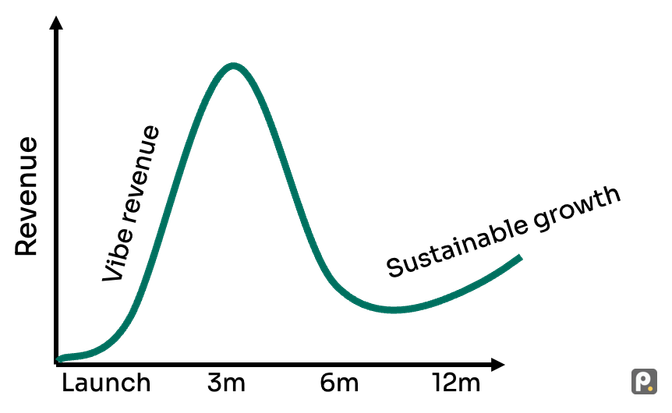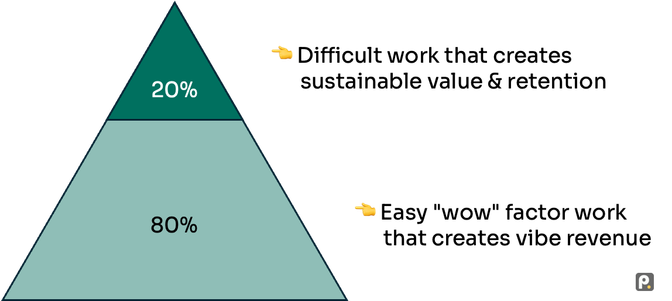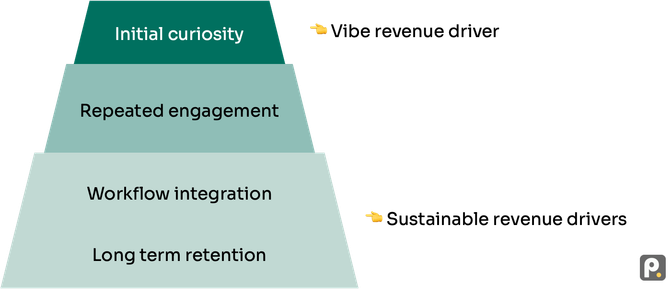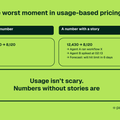Insights straight to your inbox
Join 10,000+ subscribers getting the latest insights on AI monetization.


Pat Grady coined the term “vibe revenue” in a recent conversation with us.
Vibe revenue is that initial surge of adoption and revenue when you launch something new and shiny in the AI world - a phenomenon driven more by excitement and novelty than by sustainable value creation.
This concept resonated deeply with what we're building at Paid.
Let me break down why vibe revenue matters and how it impacts the way we should think about building AI agent businesses.
And more importantly, what happens when the vibes… stops?
Vibe revenue is that initial burst of customer adoption and spending that comes from the "wow factor" of new AI technology. It's:
As Pat put it:
"You go zero to a hundred overnight or whatever number it is. And then you look at the metrics and it turns out your engagement stinks and your retention stinks... It's because everybody's willing to try something... but the difference between having a magic moment and solving an end-to-end workflow in a unique and compelling way, that can be a pretty big difference."
(Check out the full podcast episode here, where Pat describes it at around minute 12.)
Have no doubt, many many companies will face this trap.
The inflection point will likely hit about 6-9 months after the peak.
This is when:
This moment separates the vibe companies from the value companies.
Without genuine momentum, you're facing what I call the "renewal cliff" - that sudden drop when customers realize they've been paying for excitement rather than results.

Not all is lost though.
The 80/20 rule takes on a new meaning in AI. You can get 80% of the way there in minutes, creating that magical demo or first experience that gets people excited.
But that last 20% - the part that creates actual stickiness and retention - might take weeks or months of refinement.

This creates a dangerous trap for new founders:
With vibe revenue, you hit a peak very quickly - but the novelty wears off and the revenue drops. After that, a more sustainable upwards momentum is possible.
Having worked with dozens of AI agent companies, I've observed that sustainable momentum comes from three critical elements:
The difference between a cool demo and a must-have product is how deeply it embeds into daily workflows. Companies retaining momentum have:
Practically: Track not just how many people use your product, but how many different workflows they integrate it into. Each integration point creates another reason to renew.
Successful AI (and specifically agentic) companies demonstrate a pattern of expanding value:
At Paid, we see this firsthand - customers who measure and demonstrate expanding value maintain 85%+ renewal rates, while those who don't struggle to maintain even 40%.
Practically: Can you demonstrate with metrics that your models are improving based on usage? Can you prove to your customers that the more they use it, the better they get?
True momentum comes from shifting the narrative from what their agent does to what outcomes it delivers, like:
As Pat noted in our conversation: "The 80-20 might give you a magical moment, but you gotta get that last 20% to get people to stick, and that's where a lot of people are getting stuck."
Practically: Look at cohort retention - What percentage of day 1 users are still active on day 7, 14, 30? Are people completing valuable workflows or just trying one feature?

To avoid the vibe revenue trap, implement a momentum measurement system from day one:
These metrics serve as early warning systems, helping you identify which accounts are building momentum and which are stuck in vibe territory.
Here are our practical recommendations for escaping the vibe revenue:
Join 10,000+ subscribers getting the latest insights on AI monetization.



Price smarter. Protect margins. Grow revenue.